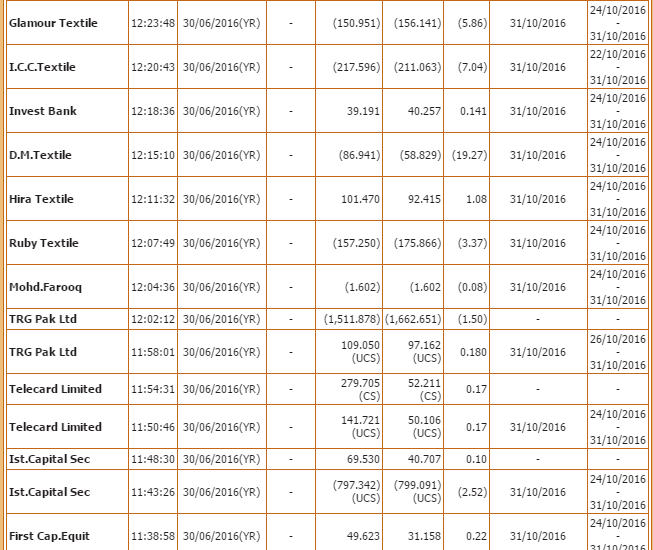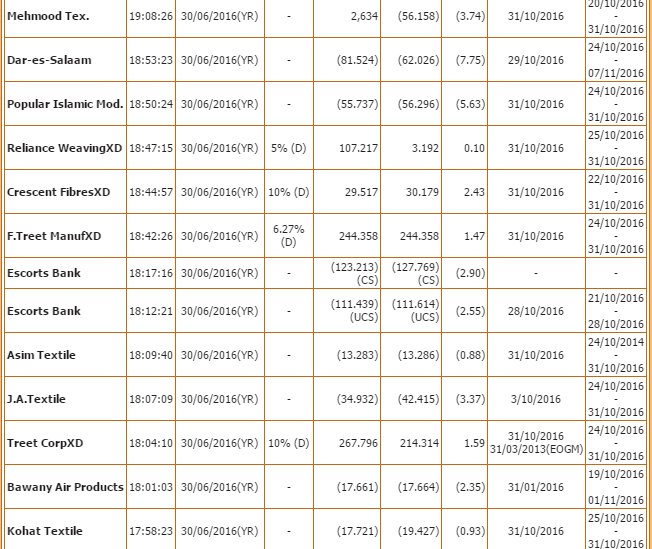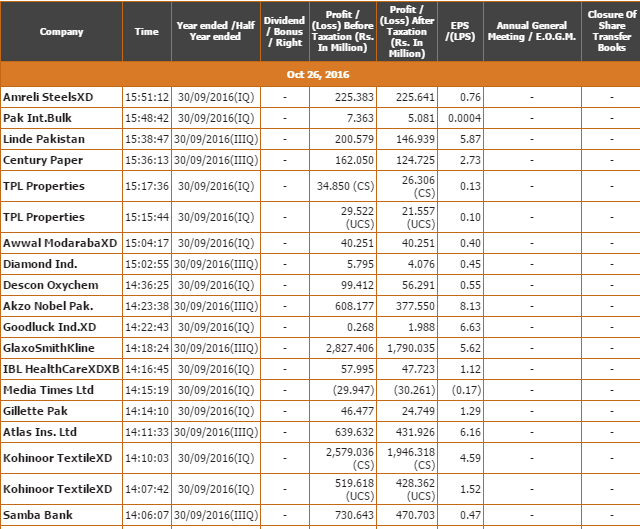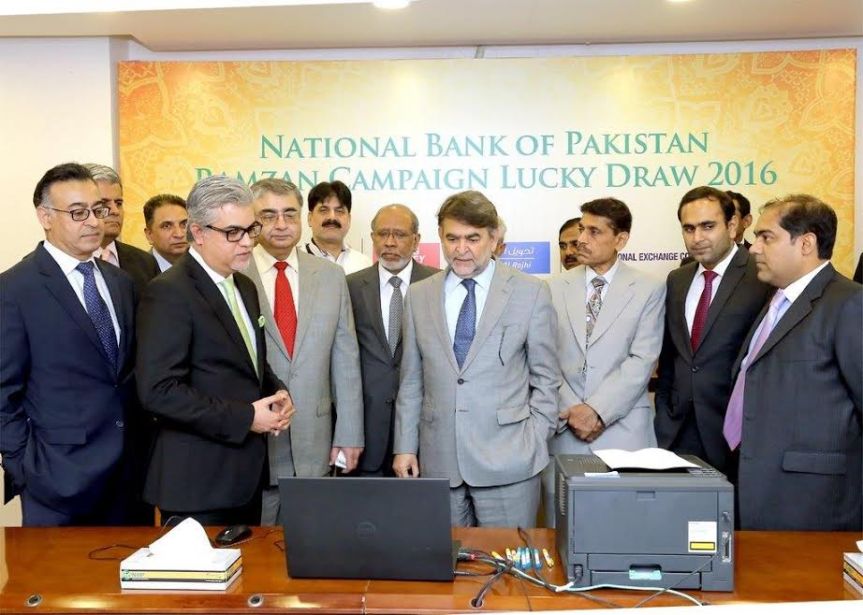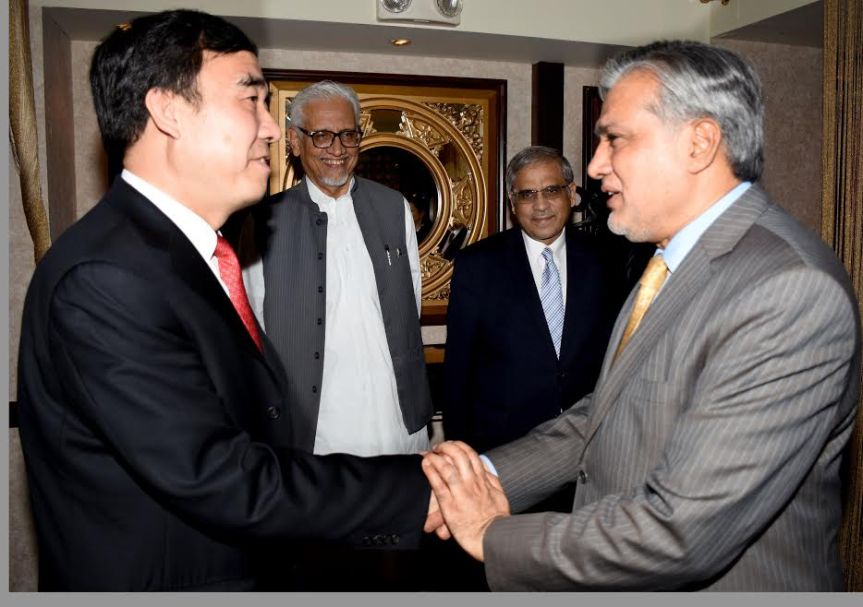Dr. Ashfaque H. Khan, Dr. Hafiz A. Pasha and Dr. Salman Shah, who have served on key posts in Finance Ministry and Planning Division have written an open letter to the IMF, exposing wrong picture presented by the Dar-led economic team about Pakistan’s economy. Dr Khan send this article to the Editor of Corporate Ambassador, Javed Mahmood today.

The three year program under the IMF’s Extended Fund Facility (EFF), has now come to an end. Pakistan has received $6.1 billion loan from the IMF under this program. During the tenure of the program, Pakistan was required to undertake wide – ranging structural reforms and implement the type of macroeconomic policy that would restore macroeconomic stability, gradually promote economic growth and build foreign exchange reserves to bolster external buffers.
After the completion of the twelfth and the final Review, the IMF Staff Mission Report has declared ‘victory’ and stated that “the Fund Supported Program has helped the country restore macroeconomic stability, reduce vulnerabilities and make progress in tackling key structural challenges. Economic growth has gradually increased and inflation has declined. External buffers have been bolstered, financial sector resilience has been reinforced, and the fiscal deficit has been reduced while social safety nets have been strengthened”.
On the reform side, the Report stated that “tax policy and administration reforms allowed for further revenue mobilization.Steps have been taken to strengthen the State Bank of Pakistan’s autonomy. Energy sector reform allowed a reduction of power outages, energy subsidies, and accumulation of power sector arrears. A country – wide strategy to improve the business climate was adopted”.
The Staff Report contains the views of the IMF on the “success” of the program. We, the three independent economists, through this open letter would like to present the other side of the picture. In particular, we identify the extent of the success, how these “successes” have been achieved and express our disappointment with the failure to implement reforms that are critical for achieving higher economic growth. Needless to mention, the three authors of this open letter have all dealt in the past with the IMF in senior management capacity at the ministry of finance, either as Federal Ministers or Advisor.
Firstly, building foreign exchange reserves to bolster the external buffer was the main pillar of the hurriedly put together IMF Program. The idea was to build reserves and repay the then IMF loan on time. That is why many independent economists including the ones who remained associated with the IMF for a long time termed the program as ‘Self-Serving Program’.
Such an objective of the program forced the government to borrow extensively to build foreign exchange reserves and in the process accumulate net external debt of over $12 billion during the program period. Incidentally, Pakistan added exactly the same amount to its foreign exchange reserves, that is, from $6 billion in end-June 2013 to $18.0 billion in end-June 2016. The above facts clearly suggest that we improved the external buffer entirely through adding external debt. Isn’t it simply postponing the current problem of insolvency to a future date?
Secondly, in a three year program, the IMF has extended sixteen waivers. Perhaps never in the history of the IMF did Pakistan receive such a large number of waivers. This diluted the purpose of the program and also reflected on the lack of emphasis towards implementing and achieving the stated goals of the program.
Sadly, the IMF Staff Mission has selectively highlighted the improvement in some economic indicators from 2012-13 to 2015-16. This includes rising economic growth, falling rate of inflation, rising tax-to-GDP ratio, higher spending under BISP and private sector credit and falling subsidies as percentage of GDP.
The rate of economic growth achieved in the last three years remains contentious. The Pakistan Bureau of Statistics (PBS) has estimated the GDP growth rate as 4 percent or above each year, reaching 4.7 percent in 2015-16. The authors have presented contrary evidence that the growth rate has been exaggerated each year, and it has ranged between 3.1 to 3.7 percent during the program periods. The Data Quality Assessment Framework (DQAF) of the IMF should have been used to check the reliability of the national income estimates.
We would like to quote the recent statement of the Managing Director of the IMF as posted on September 1, 2016 by iMF direct. In her words “The longer demand weakness lasts, the more it threatens to harm long-term growth as firms reduce production capacity and unemployed workers are leaving the labor force and critical skills are eroding. Weak demand also depresses trade, which adds to disappointing productivity growth”.
This statement clearly depicts the current state of economic growth and unemployment in Pakistan in terms of the social costs of the excessive focus on stabilization policy. The persistence of lower economic growth has failed to create enough jobs. People in general and youth in particular, are finding difficulties to get jobs. People remaining unemployed for a longer duration are becoming unemployable, with all its social and economic consequences. Not only that the unemployment rate has surged to a 13 years high at over 8.0 percent (including the ‘discouraged worker’ effect), youth unemployment rate has also increased to over 11 percent in 2014-15. Furthermore, between 2012-13 and 2014-15, the annual number of entrants into the labour force has been approximately 650,000 as against 1.3 million during 2008-13.
A particularly worrying feature of the current employment situation is the extremely high unemployment rate of 20 percent of workers with either graduate or post graduate degrees. There are 2.4 million educated workers with bad employment prospects. This is the unfortunate outcomeof the IMF Program
On the size of the fiscal deficit, the IMF Report claims that this has been reduced from 8.5 percent to 4.6 percent of the GDP. A number of steps have been taken to report smaller deficits. For example, holding back refunds and forcing commercial entities to pay taxes in advance to jack up revenue, privatization proceeds and foreign grants treated as non-tax revenue to inflate overall revenue rather than treating them as financing items, engaging in quasi-fiscal operations outside the budget, allowing for large statistical discrepancy each year (cumulatively Rs. 600 billion in three years) to show lower expenditures, exaggerating the size of the Provincial cash surplus, retaining earmarked revenues in the Federal consolidated Fund and building up large contingent liabilities (over Rs. 1400 billion of power sector circular debt, accumulation of debt in commodity financing and pending tax refunds). The IMF staff has either been blissfully unaware of or has condoned this creative accounting. Adjusting for these practices implies a fiscal deficit each year in the range of 7.0 to 8.0 percent of the GDP.
Other areas, where serious distortions exist, are: the estimates of the GDP deflator; investment and saving rates and rate of inflation, especially for poor households. A case ought to have been made for complete operational autonomy of the PBS.
Yet another “success” of the program as stated by the IMF Staff Mission is the sharp reduction in inflation rate. It has declined from 7.4 percent in 2012-13 to 2.9 percent in 2015-16. Does this decline owe to the ‘prudent’ fiscal and monetary policy pursued during the program period? The answer appears to be in the negative. The international oil and commodity prices started collapsing since June 2014. Such a collapse in the oil and commodities prices led to a worldwide decline in inflation, including in Pakistan. Furthermore, as stated above, the pursuance of stabilization policy for a prolonged period weakened the domestic demand, resulting into deceleration of prices. Thus, the sharp decline in inflation during the program period owes to the weakening of domestic demand, as well as a collapse in the international prices of oil and commodities and not to the prudent use of monetary and fiscal policy. In fact, when inflation rate was rapidly on the decline, the SBP was pursing an easy monetary policy.
The quarterly reviews have ignored the deterioration in key economic indicators. They failed to discuss big decline in exports – to – GDP ratio, stagnation in the overall and private investment – to – GDP ratio, fall in FDI, rise in external debt and public debt – to – GDP ratios, fall in total PRSP pro-poor expenditure to GDP and very importantly, a rise in the rate of unemployment especially among young, educated, and female workforce. Only 750,000 jobs were created annually in 2013-14 and 2014-15 as against 1.1 million jobs annually earlier.
As stated above, Pakistan was asked to implement a wide-ranging reforms under the IMF Program. What has been the performance on the reform side?
Power Sector Reforms
The glaring failure of the Fund program is in the implementation of power sector reforms. The 12th Review Report declares victory primarily by demonstrating that the subsidy to the sector has fallen massively from 2percent of the GDP in 2012-13 to only 0.6percent of the GDP in 2015-16.
How has this been achieved? The answer is not by any major improvements in efficiency through big reduction in losses. Instead, the policy has been to raise the power tariffs to generate more revenues and thereby reduce the need for subsidies. From 2012-13 to 2015-16, the average electricity tariff (including surcharges) has been enhanced by 40percent, leading to extra revenues of distribution companies of over Rs 250 billion. The tariffs have been increased at the time when the fuel costs have fallen by over 49 percent.
On top of this, contingent liabilities have increased exponentially in the sector. Today, the circular debt of the sector stands at almost Rs 630 billion, over 2percent of the GDP. Sooner or later, this debt will have to be retired, as happened in 2012-13, if a breakdown is to be avoided in supplies due to liquidity problems in the sector.
IMF also claims on behalf of the Government, that power load-shedding has been substantially reduced, especially in industry. Evidence to the contrary is the large continuing demand-supply gap according to NEPRA, and the fact that electricity consumption per industrial consumer has fallen in nine out of ten distribution companies, in comparison to the level achieved in the pre-load-shedding years.
Tax Reforms
The IMF Twelfth Review has highlighted, as one of the key successes of the Program, the over two percent points increase in the tax-to-GDP ratio. Much of the improvement has come in 2015-16. How has this been achieved? The main contribution is actually from enhancement in effective tax rates and not by broadening of the various tax bases. The tax structure has become more regressive and created more distortions in economic activity. Furthermore, various levies which used to be the part of non-tax revenues prior to the IMF Program were renamed as ‘other taxes’ and added to the tax revenue collected by the FBR to arrive at ‘new’ tax – to – GDP ratio. Such a practice has made the ‘new tax – to – GDP ratio non-comparable with the pre-IMF Program period.
The biggest failure is in lack of development of the direct tax system. The elite continues to enjoy wide ranging tax exemptions and concessions like the virtually no or low taxation of global income, profits of private companies, agricultural income and unearned capital incomes. The IMF clearly prefers not to antagonize the ruling elite through its reform agenda.
Improvement in Living Standards
Contrary to the claims by the IMF, living standards have probably fallen in Pakistan during the tenure of the Program. A number of reforms undertaken have contributed to rising unemployment and poverty.
The anti-poor actions include, firstly, the rise in input costs of fertilizer and electricity in agriculture due to hike in power and gas tariffs and additional taxation in the form of the GIDC. The result is that food prices have risen faster than the overall CPI and wages of unskilled workers. Today, Pakistan has the extremely serious problem of malnutrition. In the 2016 ranking of the Global Hunger Index, Pakistan has the 11th lowest position, even below Bangladesh, out of 118 countries. The non-implementation of the PMs agricultural package of September 2015 under the IMF pressure has contributed to the recent debacle in the sector.
Secondly, the primary adjustment mechanism for achieving the fiscal deficit targets in the Program has been large cut backs of up to 30percent in budgeted development spending by the Federal and Provincial governments. In 2015-16 alone these cuts have implied less employment generation of almost 300,000 jobs.Thirdly, hikes in indirect taxes have affected the cost of living adversely. This includes the levy of minimum import tariffs on basic food and other items and jump in GST rates on petroleum products, especially HSD oil.Fourthly, the decline in exports has contributed to loss of employment in labor-intensive sectors like SMEs and textiles. Consequently, as highlighted earlier, the underlying unemployment rate has gone beyond 8 percent. Fifthly, social indicators have shown only minor improvement in three years. This is due particularly to the pressure on Provincial governments to spend less on social and other sectors so as to generate large cash surpluses.
Anti-Export Bias
According to the original Program projections, exports were expected to show a steady annual growth rate of 8 percent and reach $30 billion by 2015-16. Instead, they have been falling since 2012-13 to below $22 billion last year, a short fall of over 23percent. This is perhaps one of the single most important failures of the Program. It has adversely impacted on growth and employment in the country and frustrated the achievement of greater self-reliance.
How did the Program reinforce the anti-export bias? The record level of external borrowings during the last three years has led to a form of ‘Dutch Disease’. Larger reserves, based completely on external borrowing, have created artificial stability in the value of the rupee, thereby reducing competitiveness. Enhancement of electricity tariffs by over 40percent and gas price to industry by 64percent, further affected competitiveness. In an effort to meet the Program revenue targets, FBR has held back over Rs 200 billion of refunds, leading to liquidity problems for exporters. Further, levy of a minimum import duty on raw materials and intermediate goods has added to costs.
Today, the decline in ability to service external debt obligations, including those to the IMF, is clearly demonstrated by the phenomenal increase in the external debt to exports ratio. It was 193percent in 2012-13 and has risen to 266percent by the end of 2015-16. It is likely to continue rising and go beyond 300percent by 2017-18. There is no other option now in the post-Program scenario but to present a strong export incentive package, including significant depreciation of the Rupee.
External Financing Requirement
The original Program projections were that external financing requirements, consisting of external debt amortization and the current account deficit, would reach $9.2 billion by 2016-17 and fall to $8 billion in 2017-18. However, following the much larger build up of external debt, the latest estimates of the financing requirement in the 12th Review is $ 10.9 billion in 2016-17, rising to $13.2 billion in 2017-18.
However, these estimates are based on significant positive growth in remittances and exports and a big jump in FDI. This is highly unlikely given the current trends. A more realistic estimate of external financing requirement is $15 billion in 2016-17 and $18 billion in 2017-18. This is more than 5percent of the GDP, which is considered the danger point. Part of this requirement will have to be met by a sizeable depletion of foreign exchange reserves. There is a high likelihood that by June 2018, reserves may fall to about half of the present level.
Where is the sustainability of our external position? Has the IMF Program reduced our vulnerabilities? Are we doomed to go back once again to the IMF? Will conditionalities next time go beyond the usual prior actions? Already, two weeks after the end of the IMF Program, Pakistan has been forced to float relatively high cost bonds externally of $1 billion. This indicates a lack of confidence in the sustainability of reserves in coming months and years.
Finally, in the immediate aftermath of the IMF Program, the economy has begun to unravel. Agricultural growth was negative last year and the prospects for the current cotton crop are not much better. Growth of the large-scale manufacturing sector has also turned negative in the last four months for which data is available. Seven out of the twelve industrial groups are showing declining output. The fall in exports continues and the trade deficit has risen sharply. Remittances are also contracting, along with a sharp reduction in FDI. FBR tax revenue growth has plummeted and large borrowing has been resorted to by the Federal Government from SBP. Development releases of funds have been relatively small and the process of implementation of CPEC infrastructure projects is very slow. Contingent liabilities have reached alarming levels and the bleeding of public sector enterprises/utilities continues. Can we still say that the reforms implemented during the tenure of the Fund Program have left the economy in a ‘sustainable position’? The answer, unfortunately, is an unambiguous no.
* The authors have worked for the Ministry of Finance and dealt with the IMF at the highest level for a long time.
